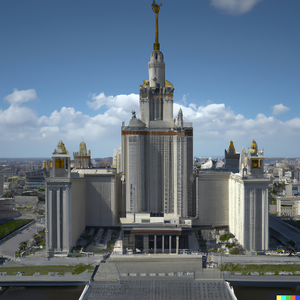Supreme Soviet of the Soviet Union (TheodoresTomfooleries)
Jump to navigation
Jump to search
Supreme Soviet of the USSR Верховный Совет СССР Verkhovnyy Sovyet SSSR | |
|---|---|
| 19th Supreme Soviet | |
Badge worn by deputies of the Supreme Soviet | |
| Type | |
| Type | |
| Houses | Soviet of Nationalities Soviet of the Union |
| History | |
| Founded | December 5, 1936 (First session) |
| Preceded by | Congress of Soviets |
| Leadership | |
| Structure | |
| Seats | 2000 |
 | |
Political groups | Communist Party of the Soviet Union: 1,749 seats Independents: 251 seats
|
Length of term | 5 years |
| Elections | |
| Direct election | |
First election | 12 December 1937 |
Last election | 4 March 2024 |
Next election | 4 March 2029 |
| Motto | |
| Workers of the world, unite! | |
| Meeting place | |
 | |
| Palace of the Soviets (Joint sessions of both houses) | |
| Website | |
| en | |
The Supreme Soviet of the Soviet Union is the main bicameral legislative body of the federal government of the Soviet Union. It consists of the Soviet of Nationalities and Soviet of the Union, which represent the nationalities and the union republics respectively. The Supreme Soviet meets at the Kremlin Presidium in Moscow. Deputies of the Supreme Soviet are directly elected by eligible members of the Soviet population via universal suffrage every 5 years, and elections have been held to the Supreme Soviet since 1937.
The 1936 Constitution established the Supreme Soviet as a legislative body, but the Supreme Soviet did not supersede the Congress of Soviets as the supreme legislative authority until its first session on 12 January, 1938.